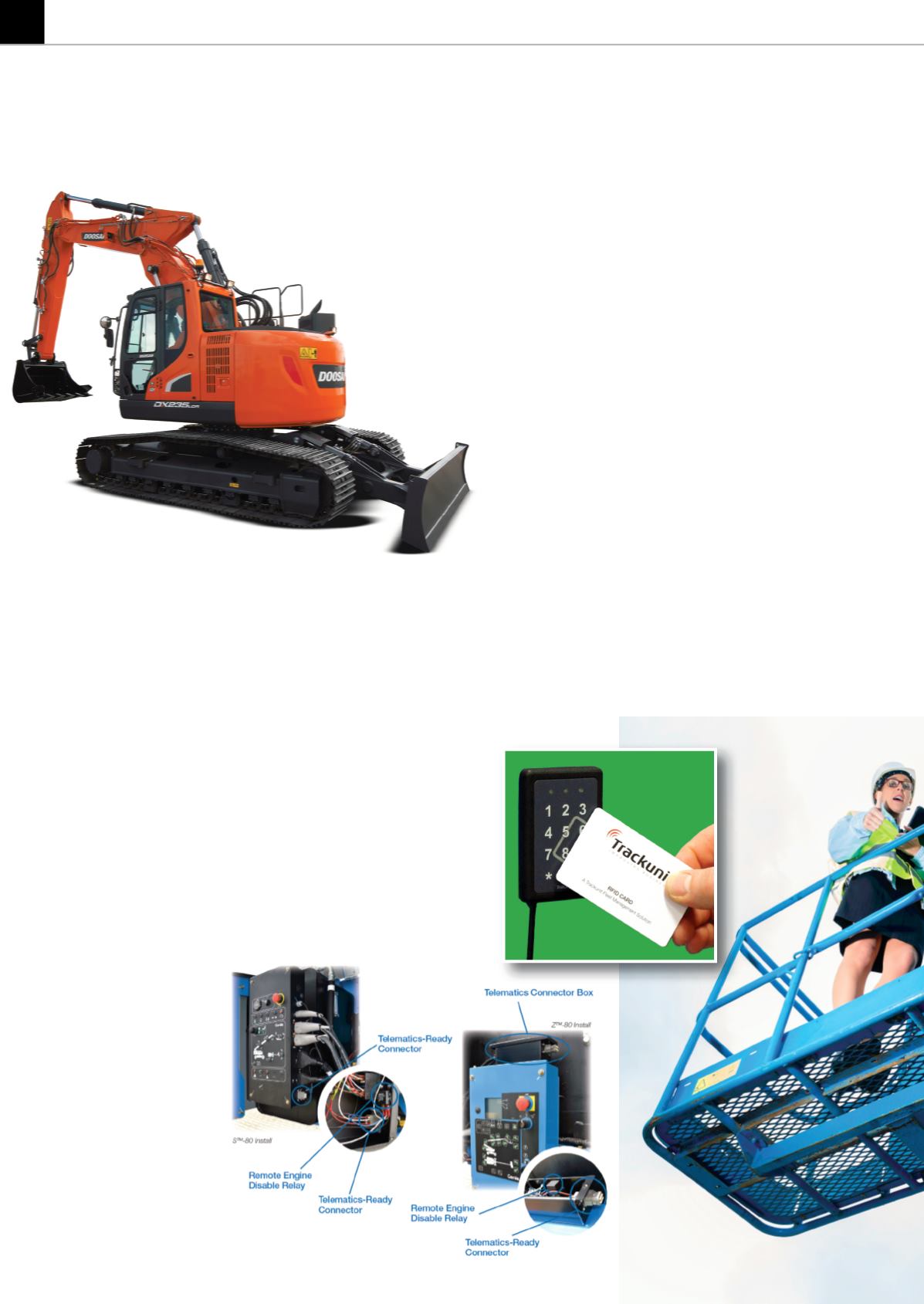
52
ASSETTRACKINGANDTELEMATICS
E
ven a company with a telematics system
modelledon the internet can sometimes face
theproblemof “toomuch information”.
For US software company Infor, that is exactly
the position now. Having been in the market since
the early 1990s, and now operating in 12 sectors, it
describes its telematics solution as the “Internet
of Things”. According to director, industry strategy
Andreas Hellström, the roots of the technology go
back towhen “a largematerials handlingequipment
started putting electronics on its forklifts”. As the
means of delivery has changed, so has the choice
of informationavailable to the customer - and that’s
where theproblem lies.
“Take some of the larger OEMs of construction
equipment,” saidMrHellström. “A lot of theproducts
now have a telematics function on board, and the
customer can turn on everything or nothing. But
they are operating several hundred datapoints
and it can lead to information overload. When that
happens, how do you prioritise? The industry is
extremely clerical andadministrativeas it is. Adding
more doesn’t necessarily make
itmore efficient. ”
On the upside, Mr Hellström
said: “The rental industry has
been very quick to pick up on
GPS technology”.
“There has been a rapid
uptake on this type of
equipment, whereas previously
it hadbeenquitea slowadaptor
in some areas. It’s easier to
illustrate a business case for
telematics and show a return
on investment. You can show
operating hours or idling hours
on capital equipment fleets,
which gives rental companies
the chance to change their
service models and become
more competitive.
Several Doosanmachines now
feature the CoreTMS fleetmanagement system
Genie’s built in telematics connector explained
“What we are also seeing is a big advantage
in maintenance. The industry has moved from
fixingequipmentwhen itbreaks topreventative
maintenance and now to being able to read
diagnostic information. They can work with
predictive maintenance and decrease overall
costs, and use the data to determine
the product mix and
investment decisions.”
For
Infor,
the
benchmark in terms of
a telematics contract
remains its strong
business relationship
with Caterpillar, where it
has collaborated to produce
dealer-specific solutions and also set up the Infor
Caterpillar Dealer AdvisoryCouncil.
“What Cat has done is always be very close
with distributors and dealers around the globe,”
commentedMr Hellström .
“It hasalwayshadan insight directly into thedata.
When you’re a customer you don’t realise you’re in
a dealership, it’s like being in Cat. And that close
relationship rings through here as well. Rather than
an individual dealership or rental company, you
get Cat as a central point
in the data. We have similar
relationships with other
brands, but they haven’t
necessarily come as far yet.”
As for the future: “We’re
trying to take enterprise
business systems into the
consumer experience, such
as smart phones. That’s the
next big step we all have
to work on, because the
next generation of users aren’t going to have the
patience that we had. They are not going to bother
with courses or trainingmanuals.”
Standards
What kindof a futurewill panout for thoseuserswill
be influencedby theefforts that have takenplace to
establish a telematics standard so users can see all
their fleet informationacrosscommondatapointson
a singlewebsite. Both the German trade association
theVDBUMand theAmericanbodies theAssociation
of Equipment Manufacturers (AEM) and Association
of Equipment Manufacturing Professionals (AEMP)
have been working in this area - in September 2014
they produced a draft standard after a summer of
high-profilemeetings with OEMs including Liebherr,
Wirtgen-Vögele, Caterpillar andBauer.
The standardisation of telematics has also
attracted the attention of the European Rental
Association (ERA), where it will be the subject of
a roundtable at this year’s Convention in June,
with the VDBUM’s Udo Kiesewalter confirmed as a
speaker.
By then it is expected that the standard will have
IRNAPRIL-MAY 2015
The Trackunit DualID system
can be usedwith all types of equipment
Via the Trackunit
DualID, access to
machines is allowed
using either a RFID
card or a PIN
Raisingthestandard
Telematics is ‘the branch of information technology dealingwith the
long-distance transmission of computerised information’ but implementing
it has beenmore complex than defining it, until now.


